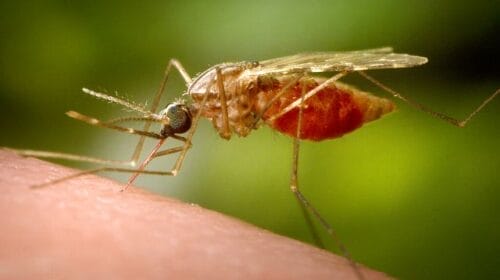Satellites track locust swarms as they attack crops in East Africa, earth observation webinar hears
The African Development Bank’s Climate for Development Africa Special Fund (CDSF) is using earth observation to build Africa’s resilience to extreme weather events, through the €20 million Satellite and Weather Information for Disaster Resilience (SAWIDRA) Program.
The outcomes of the programs were highlighted on 24 September, during a webinar on earth observation, which involves using satellite data for weather, hydrological and climate services.
The SAWIDRA program, funded by the 10th European Development Fund, was implemented from 2016-2020 by the CDSF in collaboration with the European Organization for the Exploitation of Meteorological Satellites (EUMETSAT).
Anthony Nyong, the African Development Bank’s Director for Climate Change and Green Growth, explained the  significance of the CDSF.
significance of the CDSF.
“We know that the quantity and quality of weather observations and forecasts fall far below the minimum level required to provide early warning services in Africa,” Nyong said.
“We are pleased that, through the SAWIDRA program, the CDSF is bridging this gap by strengthening the capacities of Africa’s regional climate centers and National Meteorological and Hydrological Services. We are confident that, going forward, the Bank will continue to harness the benefits and impacts of SAWIDRA in order to assist countries and local communities across the continent to reduce the risk from natural disasters using satellite data.”
The frequency and magnitude of climate-related hazards in Africa has significantly increased in the last five years.
As many as 180 million people across the continent have been affected by extreme weather events, resulting in estimated losses and damage of over $22 billion, including 2019’s Tropical Cyclones Idai and Kenneth, the deadliest and costliest storms to ever hit southern Africa.
This year, the Greater Horn of Africa region is facing the worst locust invasion in decades, a trend that is linked to anthropogenic climate change and extreme weather events. Deadly swarms capable of travelling 100 miles a day and consuming enough crops to feed 35,000 people are threatening livelihoods and food security in the region.
Climate change is also affecting Africa’s ability to deal with the devastating effect of the COVID-19 pandemic on its health, social and economic systems. The spread of the novel coronavirus is threatening decades of economic and social gains.
The webinar presented the benefits of SAWIDRA, including case studies on how the program has helped local communities across Africa reduce the risk from natural disasters, using satellite data.
“We believe that continuing investments will strengthen and sustain the results from programs implemented by the CDSF, while providing modern infrastructure and generating applications, products and services for climate-sensitive sectors in the Banks’ regional member countries,” said James Kinyangi, Coordinator of the CDSF.
The SAWIDRA program has also helped farmers make informed decisions on optimal planting times, said Dr. Andre Kamga, Director General of the African Center of Meteorological Applications for Development.
Dr. Abubakr Babiker, a climate scientist and climate information expert at the IGAD Climate Prediction and Applications Center, said infrastructure procured through SAWIDRA was helping to monitor the East African locust invasion.
The webinar was hosted by the Climate for Development Africa Special Fund, in collaboration with the Bank and EUMETSAT. It was moderated by Mame Socé Sène from the CDSF and Rachel Venn from EUMETSAT and attracted over 200 participants, including representatives of the African Union Commission and the European Commission, as well as CDSF funders like the Nordic Development Fund and the Swedish International Development Agency.

Related content
BLOG: 5 Ways the Bank is investing in Africa’s climate information to address disasters and drive recovery
VIDEO: ClimDev Fund supports Africa’s leading climate centers, ICPAC Kenya




